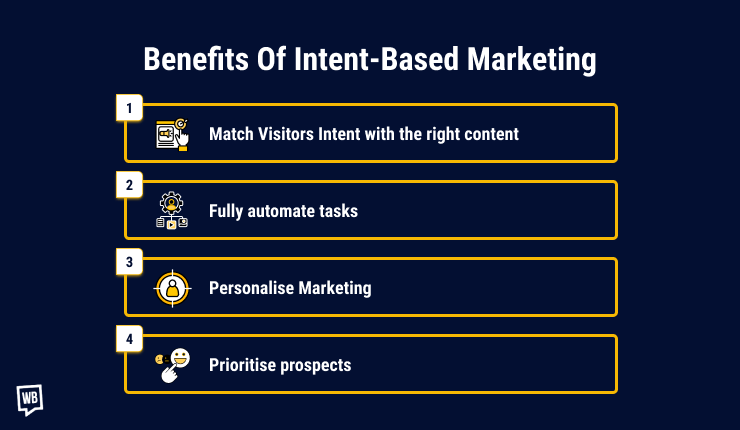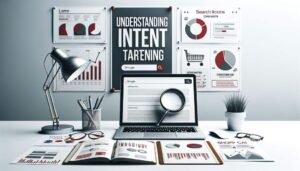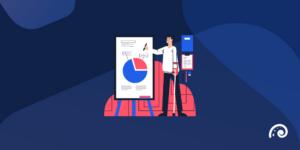Imagine if your marketing strategy stopped playing 20 questions with your customers and actually knew what they were thinking. Intent-based marketing is basically that. It’s like your sales and marketing team went to Hogwarts and majored in mind-reading (with a minor in Google Analytics).
What Is Intent Based Marketing and Why It Actually Matters
Intent based marketing means understanding what your customers are actively looking for — not just guessing. Instead of cold, generic outreach, it lets you connect with real needs in real time. This approach focuses on buyer intent signals like searches, clicks, and actions, giving your marketing team superpowers (minus the cape).

It uses customer signals—like what people are Googling, clicking, and swiping—to tailor the buying experience. Think of it as less “cold email” and more “Oh wow, this brand gets me.”
Key Benefits of Intent-Based Marketing
Intent-based marketing isn’t just about collecting data — it’s about using that data to act smarter and faster. Here are four powerful benefits that make it a must-have strategy in modern digital marketing:

1. Match Visitors’ Intent with the Right Content
When you understand what users are searching for, you can deliver exactly what they need. Whether it’s a blog post, product page, or special offer, It helps align your content with their real-time goals. This improves relevance, engagement, and ultimately, conversions.
2. Fully Automate Tasks
Intent signals allow your marketing stack to work smarter. You can automate workflows like lead scoring, follow-ups, and content delivery. Using AI-powered tools, intent-based marketing reduces manual effort and boosts productivity.
3. Personalize Marketing
Not all visitors are the same. Intent data lets you personalize messages based on what stage of the journey a customer is in. You can send tailored emails, serve dynamic website content, or display customized ads—all driven by real intent, not assumptions.
4. Prioritize Prospects
It helps your sales and marketing teams focus on high-intent leads. By identifying who’s most likely to convert, you can prioritize outreach and nurture efforts more efficiently. This saves time and improves close rates.
Real-Life Example (Because Buzzwords Are Tired)
Let’s say one person’s searching for:
“Best running shoes for marathons.”
They’re clearly not planning to jog once, get shin splints, and retire their fitness dreams forever. They’re researching, comparing, obsessing. Probably carbo-loading just for fun.
Then another person searches:
“Best deals on light jogging shoes.”
Ah yes, our noble beginner. Possibly buying shoes because their doctor gave them that look. They’re not in research mode—they’re in “just gimme something comfortable before I change my mind” mode.
Both want running shoes, but their intent? Wildly different. So why would you serve them the same generic product page with stock photos of smiling people on a beach at sunrise?
How to Get Started
To use intent-based marketing effectively:
- Track keywords and behavioral signals.
- Use AI tools and marketing automation platforms to segment audiences.
- Personalize your landing pages, offers, and emails based on intent.
Want to learn more about AI-powered intent-based marketing? Read our full guide on AI marketing automation.
- Intent or Intelligent Marketing?
 When marketers debate intent marketing vs intelligent marketing, it’s clear that guessing customer intent wastes time and budget—like throwing spaghetti… Read more: Intent or Intelligent Marketing?
When marketers debate intent marketing vs intelligent marketing, it’s clear that guessing customer intent wastes time and budget—like throwing spaghetti… Read more: Intent or Intelligent Marketing? - The Future of Marketing: How AI is Changing the Game
 TechWerks AI in Marketing: Everyone’s Thinking It — We’re Just Saying It Let’s be honest, every marketer and seller using… Read more: The Future of Marketing: How AI is Changing the Game
TechWerks AI in Marketing: Everyone’s Thinking It — We’re Just Saying It Let’s be honest, every marketer and seller using… Read more: The Future of Marketing: How AI is Changing the Game - Intent Data for Sales in 2025: Why It Matters
 You’ve heard the saying, “You have to spend money to make money.” That’s true — but spend it smarter, and… Read more: Intent Data for Sales in 2025: Why It Matters
You’ve heard the saying, “You have to spend money to make money.” That’s true — but spend it smarter, and… Read more: Intent Data for Sales in 2025: Why It Matters - What Is Intent-Based Marketing?
 Imagine if your marketing strategy stopped playing 20 questions with your customers and actually knew what they were thinking. Intent-based… Read more: What Is Intent-Based Marketing?
Imagine if your marketing strategy stopped playing 20 questions with your customers and actually knew what they were thinking. Intent-based… Read more: What Is Intent-Based Marketing?

